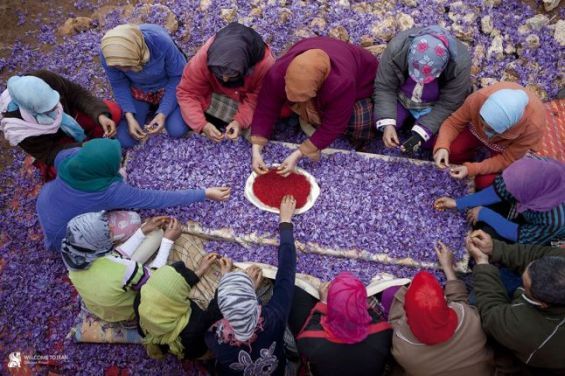Geographical indications (GIs) referring to products with specific characteristics, qualities or reputations resulting from their geographical origin can contribute to the social and economic development of rural areas. This is the main finding of a study published Thursday, and conducted by the Food and Agriculture Organization of the United Nations (FAO) and the European Bank for Reconstruction and Development (EBRD).
Entitled «Strengthening sustainable food systems through geographical indications», the report analyzes the economic impact of the geographical indications based on nine case studies, wrote FAO in a note published on its official website. These surveys include Colombian coffee, Darjeeling tea (India), Futog cabbage (Serbia), Kona coffee (United States), Manchego cheese (Spain), Penja pepper (Cameroon), Taliouine saffron (Morocco), Tête de Moine cheese (Switzerland) and Vale dos Vinhedos wine (Brazil).
Contracts with more than 400 farmers
Recently, the saffron value chain in Taznakht (Draa-Tafilalet) and Taliouine (Souss-Massa), has been organized and boosted. In 2015, 2,300 farmers came together to strengthen the sector, coupled with the creation of 50 cooperatives, 35 of them with PDO certification, 3 economic interest groups (EIGs), middlemen and 2 private enterprises, clarified the same report.
Farmers usually grow small plots (0.2 hectare on average) using traditional techniques, but their yeilds remain very limited. In 2014, private growing and processing enterprises managed to cultivate 19 hectares, using fairly intensive productions techniques and supplementing their supplly through contracts with more than 400 farmers. Saffron production increased between the period from 2010 to 2016, said the Belgian Development Agency. In the Taliouine-Taznakht region alone, six tons of saffron was produced in 2016.
Yet saffron cultivation is still largely limited to an informal sector. Ten years ago, in 2009, 70% of domestic production was marketed through parallel channels, which impacts the quality of production.
Controls are carried out by the producers themselves, thanks to the training provided by the Council of Regions Souss-Massa and Draâ-Tafilalet, who then control the producers once a year. A third evaluation is performed by Normacert, the accredited certification body responsible for issuing the certificate of conformity.




 chargement...
chargement...












